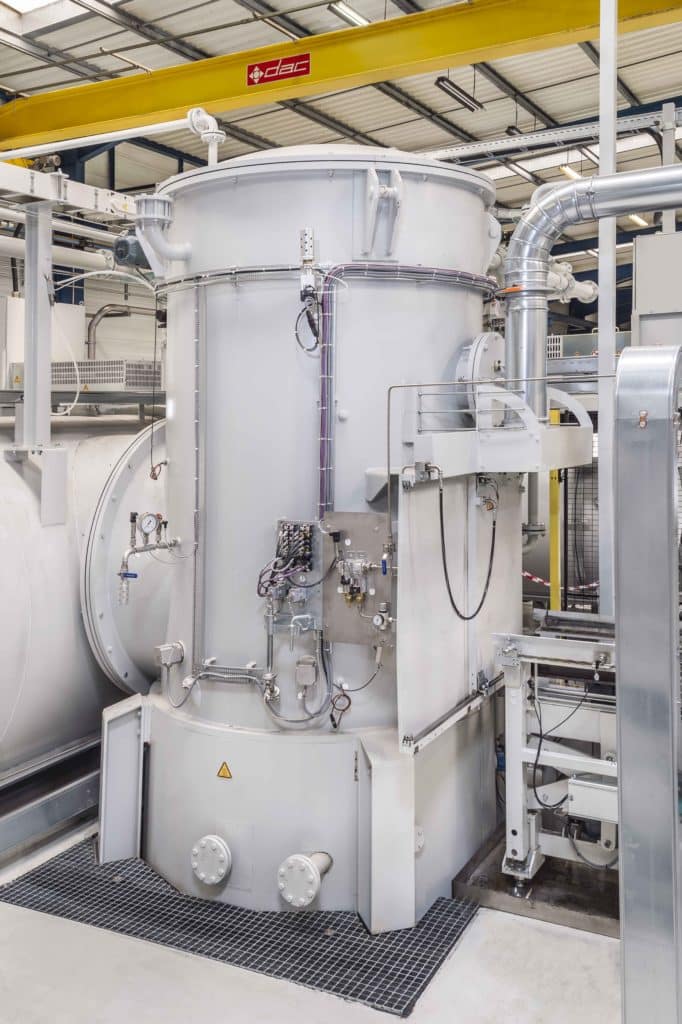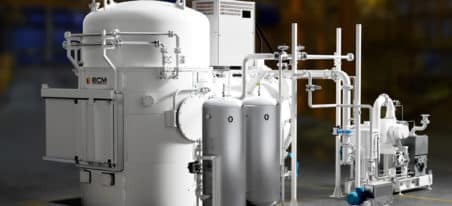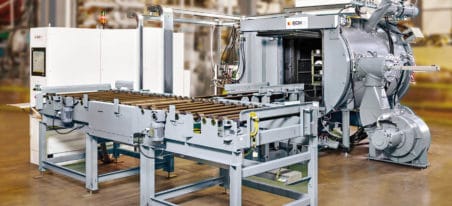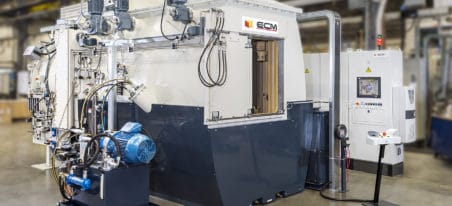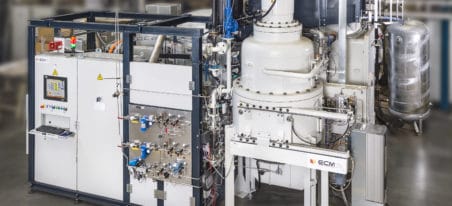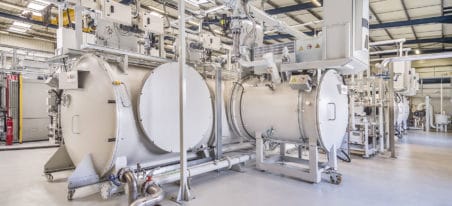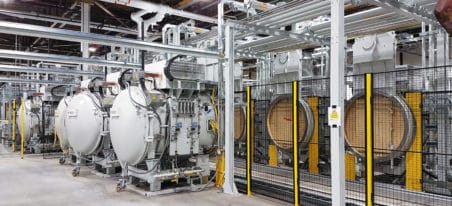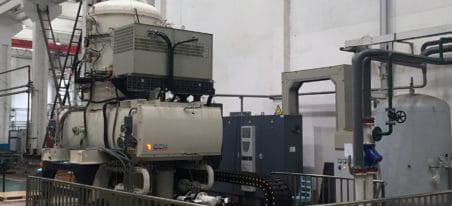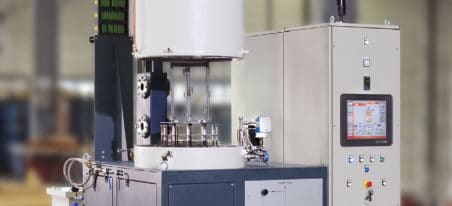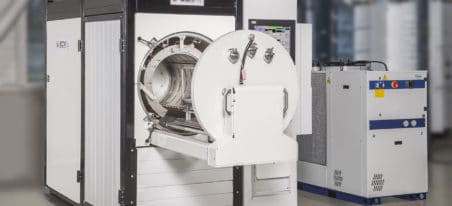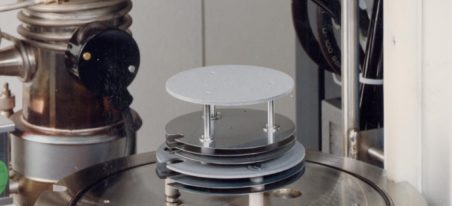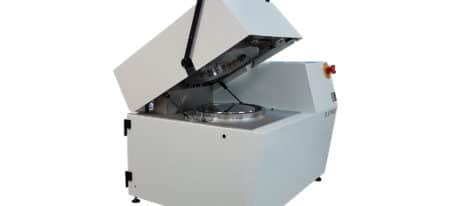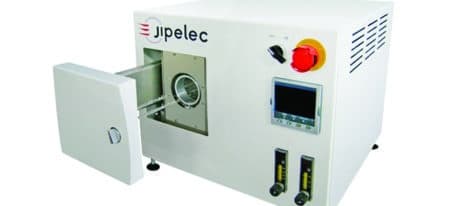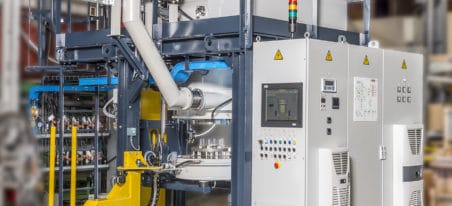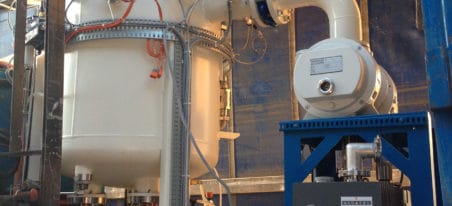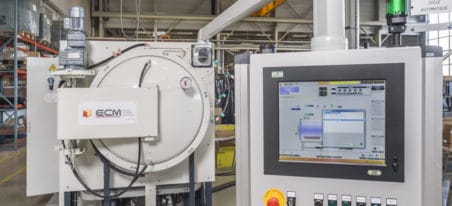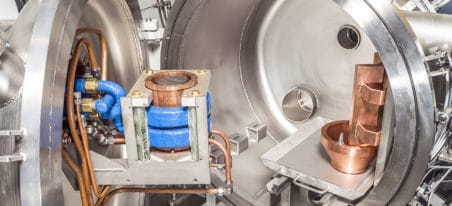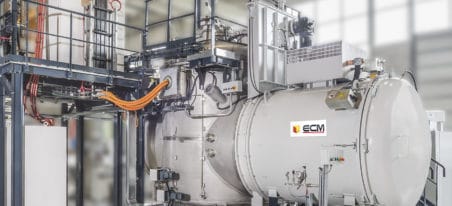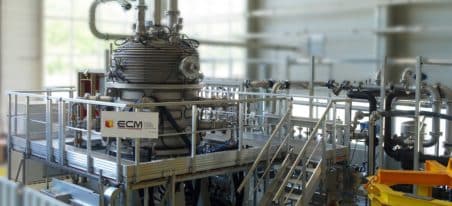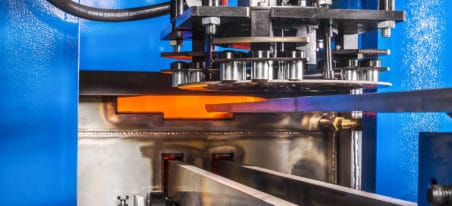Preceded by a heat treatment operation, oil quenching enables advanced metallurgical performance.
Oil quenching is THE quenching solution for parts that cannot be gas quenched in large quantities because of the wide volume of the loads – this implies poor profitability since it would require several cycles to treat the same amount of parts. Also, oil quenching allows treating pats made of materials that are not compatible with gas quenching, because of their raw materials’ characteristics.
When comparing oil quenching cells on traditional furnaces with the ones supplied on ICBP cells, many advantages benefit to ECM Technologies’ solutions:
- Thanks to the vacuum process and to the quenching cell’s inertia, no flames result from the quench process. This eliminates the risk of fire.
- Oil’s life cycle is highly increased thanks to its non-oxidation. Indeed, the oil filling process is optimized and allows compensating wastes caused by the treatment of parts. Quantities are calculated to obtain enough regeneration of oil. This also cuts down maintenance costs since this reduces the cell’s cleaning frequency.
In general, once loads are oil quenched, the next step consists in going through a washing machine to clean the parts before going through the final steps of production. A full immersion in lye meets with most needs.
Key applications for oil quenching are:
- CVT (Continuous Variation Transmission) gearboxes’ parts
- Poorly alloyed steel gearboxes for automotive applications
- All kinds of gearboxes and transmissions for trucks or agricultural applications
- All mechanical parts with poor or average added value
On ECM Technologies’ ICBP installations for low pressure carburizing, oil quenching enhances their advantages:
- Strong reduction of cycle times
- Use of cold wall furnaces that are flexible and potentially modular
- No inter granular oxidation
- Strong cost reduction of treatments thanks to reduced gas consumption and to low maintenance costs
Whatever the suggested installation, ECM Technologies always includes in its offers, depending on customers’ needs, a cold oil quenching solution (80°C max) and a hot oil quenching one (80°C up to 180°C). Regarding hot oil versions, a reinforced thermal insulation is included as well as additional heating power and immersed hydraulic brewers.
ECM Technologies pays special attention to the manufacturing of its quenching cells, in order to meet with the most demanding expectations. To do so, ECM Technologies implements:
- Sufficient oil volumes to reduce instantaneous temperature increase when quenching (example: 6.3m3 for a 750kg load)
- Hydraulic immersed brewers allowing to reach necessary speed for convection to limit calefaction phenomenon (speed in between 0 to 1.4m/s)
- Variating quenching speed disposal allowing to adapt brewing speed according to parts, and thus, to reduce distortions
- Optional oil cell temperature control unit, to respect AMS2750E – set up of a thermowell for SAT thermocouples
- Measurement of high and low oil levels with optional alarms when full or empty
- A system supported by an exchanger to cool down the oil between two loads (oil/water when cold oil, air/oil when hot oil)
- Optional automatic oil filling system, including a tank and a filling circuit
- Optional cooling down system to cool down loads using neutral gas (1bar) above the oil pit. This allows realizing post carburizing cooling cycles for parts requiring machining before quenching, or cooling cycles pre re austenitization for grain refinement before quench. A brewer is linked to a copper made exchanger to dissipate heat calories.
Based on the chosen ICBP, maximum gross loads can reach :
- ICBP Flex & Jumbo: 750kg – optional 1000kg
- ICBP ECO 966 TH: 750kg
- ICBP ECO 1299 TH: 1500kg
- PFTH: 2000kg


